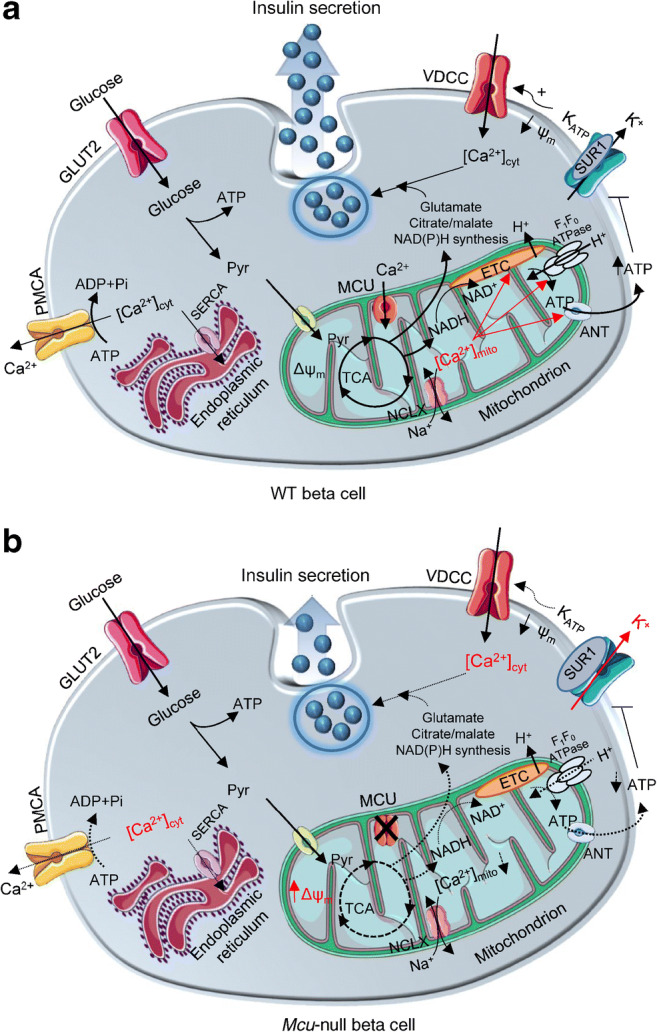Fig. 7.

Putative involvement of ΜCU in coordinating the response of beta cells to nutrient supply, and impact of Mcu deletion on GSIS. (a) In WT animals, glucose is taken up by beta cells and catabolised glycolytically. The formed pyruvate (Pyr) is metabolised by mitochondria through the citrate (TCA) cycle, leading to an increased mitochondrial proton motive force (hyperpolarised Δψm) and accelerated ATP synthesis. By entering mitochondria via the MCU, Ca2+ potentiates oxidative metabolism to counter-balance ATP consumption. Ca2+ exits mitochondria via NCLX. Consequently, the cytoplasmic ATP:ADP ratio rises, which causes further closure of KATP channels, depolarisation of plasma membrane potential (ψm), opening of VDCCs and influx of Ca2+. Elevated [Ca2+]cyt triggers a number of ATP-dependent processes including insulin secretion and Ca2+ removal into the endoplasmic reticulum (via the sarco/endoplasmic reticulum Ca2+ ATPase [SERCA]) and extracellular medium (plasma membrane Ca2+ ATPase [PMCA]), powered by ATP hydrolysis to ADP and inorganic phosphate (Pi). Mitochondrial metabolism is also activated by amino acids, such as glutamate and citrate/malate, which appear to be necessary for appropriate generation of regulatory ‘amplifying’ signals for insulin secretion. (b) Following Mcu deletion, [Ca2+]mito is reduced, leading to a more highly polarised Δψm, weaker oxidative or amino acid metabolism and decreased ATP synthesis, perhaps due to a decrease in mitochondrial F1F0ATPase and/or adenine nucleotide transferase (ANT) activity. This is expected to result in less closure of KATP channels, further potentiated by increased expression of the sulfonylurea receptor-1 (SUR1) subunit, weaker ψm depolarisation and Ca2+ influx. Importantly, lowered ATP supply to the cytosol is expected to restrict Ca2+ pumping across the plasma membrane, as well as into the endoplasmic reticulum. Despite reporting elevated [Ca2+]cyt in βMcu-KO mice, insulin secretion in vitro was impaired, possibly due to lower Ca2+-dependent intra-mitochondrial generation of putative coupling molecules, such as glutamate and citrate/malate. ETC, electron transport chain. Red font and arrows represent enhanced pathways; dashed arrows represent impaired pathways. This figure was produced using several illustrations from Servier Medical Art, http://smart.servier.com/
